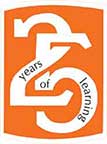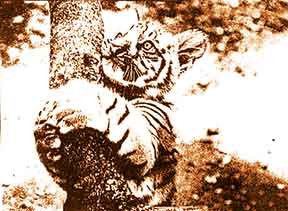S Theodore Bhaskaran
 With this July 2013 issue, Teacher Plus is happy to announce that it is entering its 25th year of existence. These 25 years have been a wonderful journey for us with you. We started out being a platform for teachers to share their experiences and concerns and we hope we have grown to be a friend you can depend on. We invite you to come take a trip down memory lane with articles from our older issues. This first one is our first Classroom Update from the inaugural issue of Teacher Plus in 1989.
With this July 2013 issue, Teacher Plus is happy to announce that it is entering its 25th year of existence. These 25 years have been a wonderful journey for us with you. We started out being a platform for teachers to share their experiences and concerns and we hope we have grown to be a friend you can depend on. We invite you to come take a trip down memory lane with articles from our older issues. This first one is our first Classroom Update from the inaugural issue of Teacher Plus in 1989.
A few years ago, in recognition of the need to protect the environment, Environmental Science was introduced as part of the science syllabus in some schools. Conservationists all over the country were thrilled. They knew that one of the best ways to help the cause of conservation was to plant the idea in the minds of children, allow it to germinate, and you have citizens concerned about the environment. But what actually happened was that it ended up as just another ‘subject’ taught within the confines of the classroom, with no relation to the outside world, a subject one had to pass to be able to go to the next class. Our concern for the environment, however, must be lived and practiced, not merely learned from textbooks in a classroom.
Conservation becomes even more imperative in the context of rapid urbanization. In achieving this, our schools and teachers play an ever increasing role. An active concern for the quality of life we deserve for ourselves, for future generations and for all living things that share this world with us, demands a high level of student knowledge and participation.
Nature walks
How do we go about creating awareness among our students? I can share with you my experience in conducting nature awareness camps for children. All you do is to take them out on a nature walk, answer their questions and let them see for themselves the interconnection between different life forms. A child’s natural curiosity takes over and the process of learning begins. Let them just look around and observe insects, plants, flowers, and trees. On your part, as a teacher, you have to be equipped to deal with these questions. You have to tell them how the environment affects us and how in turn, our lifestyle affects the environment. You could go through some basic books before you begin these activities. (I have listed some titles at the end of this article.)
Where can you take them on these walks? To the riverside, to parks, or farms. Even in big cities we have places for such outings. Delhi has its ridge and old forts, Bombay has the Borivilli National park and the coastline. But few cities are better blessed than Madras in this matter. The Adyar estuary attracts thousands of birds and mammals like the blackbuck and spotted deer. And then you have the beach.
 What is wildlife?
What is wildlife?
The aim of a nature walk should be to help children develop an awareness and knowledge of the environment and wildlife. When we talk of wildlife, we mean all life forms. The term ‘wildlife’ refers to creatures that live in a basically free condition, providing for their own food, shelter and other needs in an environment that serves as a suitable habitat. It would include insects, spiders, birds, and fish. This is an interesting point to start because birds and animals catch the fancy of children and from there you could go on to the interconnection in the web of nature between all life forms. You can talk of frogs, how tadpoles live on mosquito larvae and thus control their spread. Once the students understand the interconnection then they could develop responsible behaviour towards other creatures and towards the environment upon which all life depends.
Inside the school campus
If you are not able to take them out of the school on such walks, let them walk around the school campus. Let them identify the different creatures they see – butterflies, birds on trees, birds soaring in the sky, squirrels, worms, and spiders. Make the students search for wildlife around them. Ask them to observe and not touch or disturb the creatures they see. They will understand that wildlife occurs in a tremendous variety of forms and colours. They could make a list of creatures they have spotted. Then you could talk to them about how humans and other creatures share the environment. Prompt students to notice the wildlife all around them. The main idea of this activity is to lead students to the understanding that people and wildlife share the environment.
Inside the classroom
Inside the classroom also you could ask the students to look for signs of life. Even in clean-swept classrooms you can see signs, like a lizard on the wall, dead insects near lights, or spider webs. After such a search and discussion on their finds, introduce the idea that people and animals live together. Sometimes we do not notice that we are sharing the room with other living things, but we are.
Domesticated animals form one link between humans and wildlife. This can be a good point to talk about. What animals do they have at home – cow, dog, or cat? You could talk about what is domesticated and what is wild. Domestic animals basically depend on people to feed and take care of them and are used by people, either as a source of produce or as pets. Wild animals, on the other hand, take care of themselves. Ask them if they have seen any animal in the outdoors and if so ask them to describe the place where they sighted the animal. Talk about other animals that might be seen in that area.
You could ask the students to bring to class as many pictures of animals as they can find in magazines and newspapers. When they bring these pictures, ask then to classify them into wild and domesticated. The students could work in small groups or as individuals. You can ask the small children to make cut-outs of these pictures and place them where they fit, like birds in the sky, fish in water and a deer in the forest. This way, you could get some action going inside the classroom and the kids would love it.
_________________________________________________________________________________
Reference books for teachers
1. The Book of Indian Birds by Salim Ali
2. The Book of Indian Animals by S H Pater
3. The Book of Indian Reptiles by J C Daniel
(All the three published by the Bombay Natural History Society)
